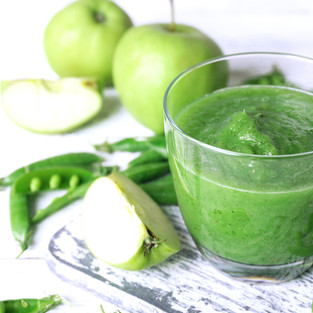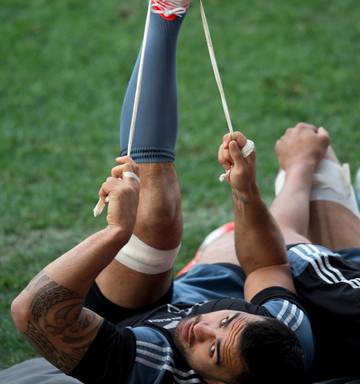While it's important to push yourself when building physical strength, exercising as often and as much as you possibly can won't lead to you becoming your strongest self, over-training can actually lead to decreased sports performance. Becoming stronger is about diversifying your workouts and allowing your body the time and resources it needs to recover. Don't feel guilty for taking a day off, it doesn't make you lazy, it can make you stronger. This blog covers the basics of recovery and what I personally do between workouts to ensure my body is building muscle and getting stronger between climbs.
Types of Recovery
When recovering from a workout or a strenuous adventure it's important to note that there are two types of recovery: short and long-term recovery. Short-term recovery is what you do preceding an exercise, while long-term recovery is what you take into consideration when building a training schedule with a specific goal in mind. Short-term recovery involves low-intensity exercises and making sure your body is replenished with energy (food and drink). While it might seem counter intuitive, exercising at a low intensity within 24 hours of your workout can actually help you recover, this is called active recovery. Short-term recovery can also apply to staggering the stages of your workout, ensuring that your muscles are resting in between sets (ex. waiting three minutes between lifting another set of heavy weights). Long-term recovery involves creating a training plan that builds in rest days, ensuring you are getting enough sleep and building towards a specific goal (tracking your progress).
It's also important to note that what you do pre-workout is just as important as your post-workout recovery. Ever notice how athletes before a sports game are warming up and moving their bodies in ways that mimic their sport? This is called dynamic stretching -- you want to do this as well as roll and static stretch before your exercise in order to fully prepare your body for activity.
The order of "recovery operations" is 1) foam rolling (to decrease muscle density), 2) static stretching (for long-term injury prevention and flexibility) and 3) dynamic stretching (to activate your muscles, bringing them through a full-range of movement) -- and then working out! See the Massage and Stretching sections below for more information on what tools you can use to help guide you through this.
How Long Does It Take to Recover?
Are you recovering from a tough one hour rock climbing session or a full-day excursion? The amount of time it takes for your body to recover from exercise depends on a number of factors, including the intensity, volume and frequency of your workouts. Restorative periods can range from a few hours to several days. The higher the intensity of your exercise the greater the need is to plan for rest and recovery post-training.
And if you're sick, consider taking it easy, while doctors say you can still workout if you have a common cold (unless you have a fever), consider taking a rest -- it's not worth it to turn a simple cold into a full blown sickness; rest up (and don't spread your germs)!
Track Your Workouts to Help You Recover
In order to optimize your recovery, I recommend monitoring your workouts with a tracking system (either an app or journal) and a heart rate monitor (I use the Suunto Spartan watch that links up to the Suunto Heart Rate Monitor); this will allow you to determine what progress you're making and your recovery needs, which may change as your fitness improves.
Sleep
Sleep plays a key role in your rest and recovery. Staying up late or waking up early to squeeze in a workout sometimes isn't the most effective option if it means you're losing out on those precious Zzz's. While missing out on sleep one or two evenings won't do any long-term damage, eventually, sleep deprivation leads to loss of aerobic endurance and can negatively affect your workouts and recovery. You need to make sure you're getting good-quality sleep too -- only in REM are you releasing the human growth hormone, which helps your tissues repair. I recommend monitoring your sleep schedule with an app (I use the Bedtime app on the IPhone) or tool (ex. the Motiv ring) or journal, and logging this in your workout-tracker.
It's important to note that even if you have plenty of sleep, if your workouts or adventure are neurologically demanding, you will experience depletion of neurological components that effect the transmission of nerve impulses that create muscle contractions and your performance will suffer.
Tools to Help You Recover
Recovery isn't just about sleep and watching how fast your heart rate pitter patters, you can utilize tools, most of which are available at your local gym, to relieve the tension in your body and really relax.
"If physical training is a tool, it's a hammer. Often we swing it to the exclusion of all other tools because it feels like an easy fix: it features nearly immediate positive feedback as well as rapid progress, especially if you've never used one before." -Training for the New Alpinism by Steve House and Scott Johnston
Massage Tools
If you can't afford a massage after every workout, you can still get the "it-hurts-so-good" benefits by utilizing a rolling tool. Rollers come in all shapes and sizes which you're meant to literally roll your body over to make your tissue more pliable. You want to roll over the tender areas (trigger points) until you feel relief. Holding certain sections over a roller for more than 30 seconds (manual release) or moving through that muscle's full range of motion whilst on the roller (active release) will help break up adhesions and realign muscle tissue. This promotes flexibility and reduces pain and stiffness in your muscles and joints. I use each of the tools listed below after almost every workout. My favorite by far is the Hypervolt, which is a wireless massage tool that allows you to apply pressure to specific sections with varying levels of intensity - it's much quieter than some of the other massagers on the market . And if you're wanting to massage your fingers after a day of climbing or bouldering, I recommend these acupressure massage rings (they're also great for fidgeters!).

Stretching Tools
Stretching is probably the most commonly thought of and practiced form of recovery as you can feel almost instant relief. It's a practice that has been performed for centuries, likely because it's an instinctive tool. The practice increases flexibility and blood flow throughout your body, helping reduce muscle soreness and stiffness, while increasing your range of motion.
As mentioned previously, stretching before your workout is essential. You want to incorporate both static and dynamic stretches into your routine. Static stretching should be done to to increase flexibility, lengthen muscles, and prevent injury in the long-term. While dynamic stretching warms the body up and prepares the muscles for your activity, preventing short-term injury.
Compression Clothing
Believe it or not, what you're wearing during and after a workout can affect your recovery -- research shows that wearing compression clothing may "improve joint awareness, local blood flow, waste product removal, improve running economy, reduce swelling, reduce muscle oscillations, and decrease post-exercise muscle soreness whilst appearing to have no negative impact on performance" (Science for Sport, 2018).
Sauna, Steam and Ice
Going into a sauna or steam room for a few minutes can help increase your body's circulation post-workout. But if you prefer the cold, you can take an ice bath or have a cryotherapy session, which will help reduce inflammation and tissue recovery. You can also do like the Nordics do, and go from hot to cold with contrast-hydrotherapy. But if your body can't handle freezing temperatures, you can take baby steps to get there -- I like to use a freezer-pack that fits on your hand and finger-gloves, helping reduce the pain and inflammation.
Food is Fuel
Training depletes your body of fuel (glycogen), which can result in your muscles breaking down. It's essential to refuel 30 - 60 minutes post-workout and rebuild those glycogen stores (the longer you wait to eat the lower the rate of glycogen synthesis will be). You'll want to take in protein, carbohydrate and water to prevent this. The recommended ratio of carbs to protein is 3:1. My favorite snacks post-workout include protein smoothies with fruit (my go-to smoothie recipe is noted below), grain-bowl salads, avocado toast, or protein bars. I also love using electrolyte tabs in my water for a quick replacement of the electrolytes I lost during the workout (Nuun or Berroca tabs are both great).

Favorite Recovery Smoothie Recipe
1 - 2 scoops of Isopure Protein Powder (Vanilla)
1 scoop of Vitality Collagen
1 cup of Vanilla Almond Milk
5 ice cubes
1 - 2 tablespoon of Honey Roasted Peanut Butter
1 - 2 ripe bananas
Recommended Books:
Rest Up!














Comments